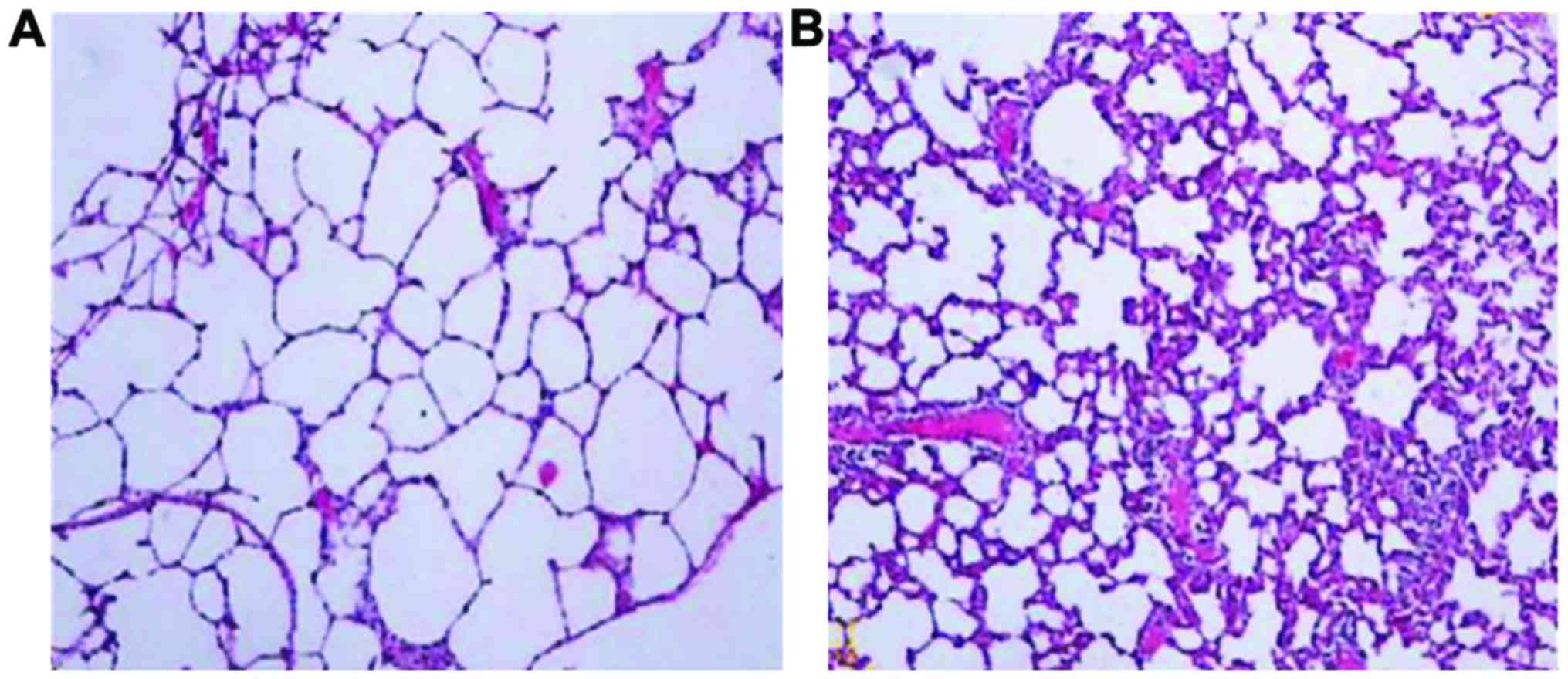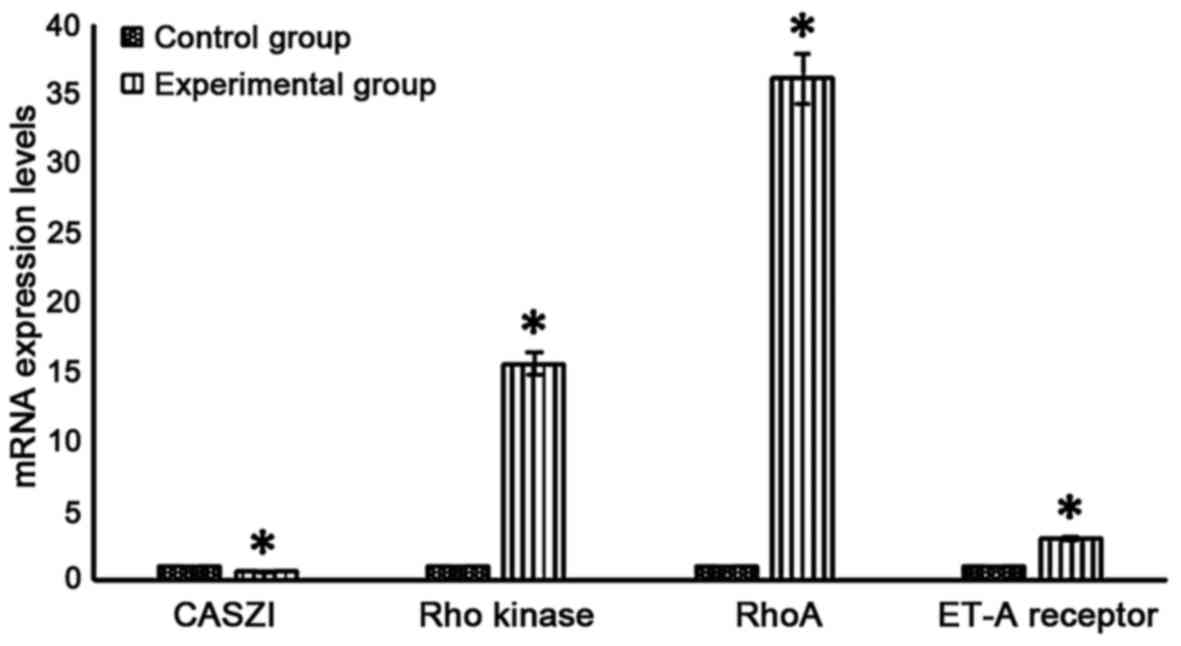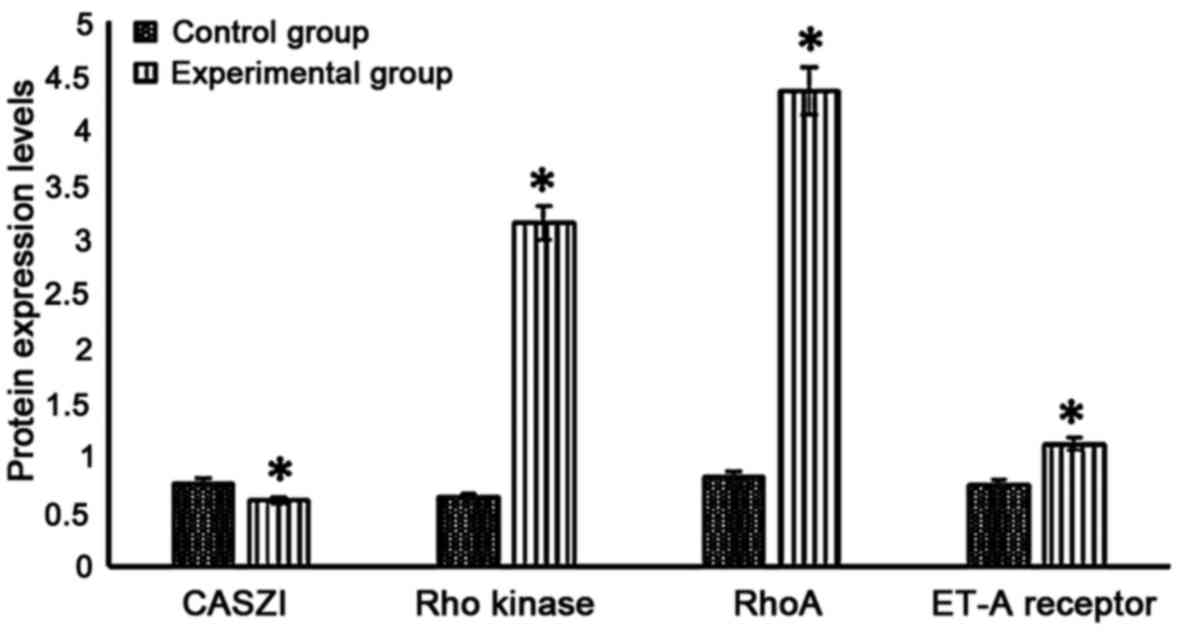Effects of CASZI on bronchopulmonary development of neonatal rats
- Authors:
- Published online on: October 19, 2017 https://doi.org/10.3892/etm.2017.5346
- Pages: 6243-6246
-
Copyright: © Xu et al. This is an open access article distributed under the terms of Creative Commons Attribution License.
Metrics: Total
Views: 0 (Spandidos Publications: | PMC Statistics: )
Total PDF Downloads: 0 (Spandidos Publications: | PMC Statistics: )
Abstract
The effect of CASZI on bronchopulmonary development in neonatal rats was investigated. Forty SD rats were randomly divided into the control group (n=20) and the experimental group (n=20) using a random number table. The experimental group was treated with hyperoxia to establish the bronchopulmonary dysplasia (BPD) model, while the control group received no treatment. At 14 days of experiment, rats in each group were treated, and lung tissues were taken for hematoxylin and eosin (H&E) staining. Radial alveolar count (RAC) and morphological changes in lung tissues were observed under a microscope, and the thickness of respiratory membrane was detected via IPP6 image. Reverse transcription-polymerase chain reaction (RT-PCR) and western blotting were used to detect the expression levels of CASZI, Rho kinase, RhoA and ET-A receptor in lung tissues. There were no obviously pathological changes in lung tissues of neonatal rats in the control group, while BPD could be seen in lung tissue structures of neonatal rats in the experimental group. RAC in experimental group was significantly lower than that in the control group (P<0.05), and the thickness of respiratory membrane was significantly higher than that in the control group (P<0.05). CASZI mRNA expression level in the experimental group was significantly lower than that in control group (P<0.05), and Rho kinase, RhoA and ET-A receptor mRNA expression levels were significantly higher than those in the control group (P<0.05). CASZI protein expression level in the experimental group was significantly lower than that in the control group (P<0.05), and the Rho kinase, RhoA and ET-A receptor protein expression levels were significantly higher than those in the control group (P<0.05). In conclusion, CASZI expression was downregulated during the development of BPD. CASZI downregulation may have an effect on the pulmonary microvascular regeneration through RhoA/ROCK signaling pathway, thus participating in the pathogenesis of BPD.












